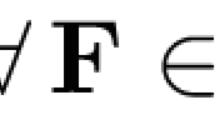Abstract
A mixed finite element method is presented for the large strain analysis of rubber-like materials, which are considered to be nearly incompressible. Two types of constitutive relations are included: generalized Rivlin and Ogden's models. The finite element equations are derived on the basis of a perturbed Lagrangian variational principle from which both the displacement and pressure fields are independently approximated by appropriate shape functions. A physically meaningful pressure parameter is introduced in the expression of complementary energy. In the paper, a special effort is made to split the deformation energy into two distinct parts: isochoric and hydrostatic parts. By doing this, a quadratic convergence rate of nonlinear iterative solution is achieved, particularly for problems deformed in the large strain range. The finite element equations are specialized for a two-dimensional 9-node Lagrange element with three-term pressure parameters. Five examples are given to demonstrate the application of the proposed numerical algorithm.
Similar content being viewed by others
References
Agyris, J. H.; Dunne, P. C.; Angelpoulos, T.; Bichat, B. (1974): Large nature strains and some special difficulties due to nonlinearity and incompressibility in finite elements. Comp. Mech. Appl. Meth. Engng. 4, 219–278
Alexander, H. (1968). A constitutive relation for rubber-like materials. Int. J. Engng. Sci. 6, 549–563
Atluri, S. N.; Reissner, E. (1989). On the formulation of variational theorems involving volume constraints. J. Comput. Mech. 5, 337–344
Babuska, I.; Oden, J. T., Lee, J. K. (1977): Mixed-hybrid finite element approximation of second order elliptic boundary-value problems. Comp. Met. Appl. Mech. Eng. 11, 175–206
Bercovier, M. (1978): Perturbation of mixed variational problems, application to mixed finite element methods. R.A.I.R.O. Num. Anal. 12, 211–236
Bercovier, M.; Jankovich, E.; Leblanc, F.; Durand, M. A. (1981): A finite element method for the analysis of rubber parts. experimental and analytical assessment. Comp. & Struct. 14, 385–391
Brezzi, F. (1974): On the existence, uniqueness, and approximation of saddle-point problems arising from lagrange multipliers. R.A.I.R.O. 8-R 2, 129–151
Cescotto, S.; Fonder, G. (1979): A finite element approach for large strains of nearly incompressible rubber-like materials. Int. J. Solids Struct. 15, 589–605
Chang, T. Y. (1988): NFAP-a nonlinear finite element analysis program. October 12, Department of Civil Engineering, University of Akron, Akron, Ohio, 44325
Finney, R. H.; Kumar, A. (1988): Development of material constants for nonlinear finite element analysis. Rubber Chem. and Technol. 61, November–December, 879–891
Flory, P. J. (1961), Thermodynamic relations for high elastic materials. Transact. Faraday Soc. 57, 829–838
Fried, I. (1974): Finite element analysis of incompressible material by residual balance. Int. J. Solids Struct. 10, 993–1002
Gadala, M. S. (1986): Numerical solutions of nonlinear problems of continua — II. Survey of incompressibility constraints and software aspects. Comp. & Struct. 22, No. 5, 841–855
Green, A. E.; Zerna, W. (1966). Theoretical elasticity. Oxford: Clarendon
Häggbland, B.; Sundberg, J. A. (1983): Lagrange strain solutions of rubber components. Comp. & Struct. 17, 835–843
Herrmann, L. R. (1965). Elasticity equation for incompressible and nearly incompressible materials by a variational theorem. AIAA Journal 3, 1896–1900
Hughes, T. J. R. (1977): Equivalence of finite elements for nearly incompressible elasticity. J. Appl. Mech. 44, 181–183
Hughes, T. J. R.; Carnoy, E. (1981): Nonlinear finite element shell formulation accounting for large membrane strains. In: Nonlinear Finite Element Analysis of Plates and Shells. ASME Special Publ. AMD Vol. 48, 193–208
Hughes, T. J. R. (1987). The finite element method. New Jersey: Prentice-Hall
Jankovich, E.; Wall, T.; Ghadiali, N. D. (1985): Finite element computation of rubber parts. Battelle, Columbus lab., Monte Carlo 85, Autotechnologies, Jan 28–Feb 1
Key, S. W. (1969). A variational principle for incompressible and nearly incompressible anisotropic elasticity. Int. J. Solids Struct. 5, 951–964
Malkus, D. S. (1976): Finite element displacement model, valid for any value of incompressibility. Int. J. Solids Struct. 12, 731–738
Malkus, D. S.; Hughes, T. J. R. (1978): Mixed finite element methods — reduced and selective integration techniques: a unification of concepts. Comp. Meth. Appl. Engng. 15, 63–81
Murakawa, H.; Atluri, S. N. (1979): Finite elasticity solutions using hybrid finite elements based on a complementary energy principle, part 2—incompressible materials. J. Appl. Mech. 46, 71–77
Nagtegaal, J. C., Parks, D. M., Rice, J. R. (1974): On numerically accurate finite element solutions in fully plastic range. Comp. Meth. Appl. Mech. Engng. 4, 153–177
Naylor, J. (1974). Stresses in nearly incompressible material by finite elements with application to calculation of excess pore pressures. Int. J. Numer. Meth. Eng. 8, 443–460
Oden, J. T.; Sato, T. (1967): Finite strains and displacements of elastic membranes by finite element method. Int. J. Solids Struct. 3, 471–488
Oden, J. T.; Key, J. E. (1970): Numerical analysis of finite axisymmetric deformations of incompressible elastic solids of revolution. Int. J. Solids Struct. 6, 497–518
Oden, J. T.; Key, J. E. (1971): On some generalization of the incremental stiffness relations for finite deformation of compressible and incompressible finite elements. Nucl. Engng. Des. 15, 121–134
Oden, J. T.; Kikuchi, N. (1982): Finite element methods for constrained problems in elasticity. Int. J. Num. Meth. Engg. 18, 701–725
Oden, J. T.; Carey, G. F. (1984): Finite elements—special problems in solid mechanics. Vol. V. Englewood Cliffs, New Jersey: Prentice-Hall
Ogden, R. W. (1972): Large deformation isotropic elasticity—on the correlation of theory and experiment for compressible rubber-like solids. Proc. Rheology Soc., London, Serial A, A 328, 567–583
Ogden, R. W. (1976): Volume changes associated with the deformation of rubber-like solids. J. Mech. Phys. Solids 24, 323–338
Ogden, R. W. (1982): Elastic deformations in rubberlike solids. In: Mechanics of Solids, R. Hill 60th Anniversary Volume, H. G. Hopkins and M. J. Sewell (eds.), 499–537
Rivlin, R. S. (1951): Large elastic deformations of isotropic materials, VII, experiments on the deformation of rubber. Philo. Trans. R. Soc. London Ser. A 243, 251–288
Scharnhorst, T.; Pian, T. H. H. (1978): Finite element analysis of rubber-like materials by a mixed model. Int. J. Numer. Meth. Eng 12, 665–676
Sidoroff, F. (1974): A nonlinear viscoelastic model with intermediate configuration J. de Mécanique 13, 679–713
Simo, J. C.; Taylor, R. L.; Pister, K. S. (1985): Variational and projection methods for the volume constraint in finite deformation elastoplasticity. Comp. Meth. Appl. Mech. Eng. 51, 177–208
Simo, J. C. (1988): A framework for finite strain elastoplasticity based on maximum plastic dissipation and multiplicative decomposition: part I—continuum formulation. Comp. Meth. Appl. Mech. Engg. 66, 199–219
Sussman, T. S.; Bathe, K. J. (1987): A finite element formulation for nonlinear incompressible elastic and inelastic analysis. Comput. & Struct. 26, 357–409
Taylor, R. L.; Pister, K. S.; Herrmann, L. R. (1968): On a variational theorem for incompressible and nearly incompressible elasticity. Int. J. Solids Struct. 4, 875–883
Thomson, E. G. (1975): Average and complete incompressibility in finite element method. Int. J. Numer. Meth. Engg. 9, 925–932
Tong, P. (1969): An assumed stress hybrid finite element method for an incompressible and nearly-incompressible material. Int. J. Solids Struct 5, 455–461
Treloar, L. R. G. (1975): The physics of rubber elasticity. Oxford: Clarendon Press
Zdunek, A. B.; Bercovier, M. (1986): Numerical evaluation of finite element methods for rubber parts. Proc. Sixth Int. Conf. on Vehicle Structure Mechanics, Society of Automotive Engineers, Detroit
Author information
Authors and Affiliations
Additional information
Communicated by S. N. Atluri, December 17, 1990
Research work supported by National Science Foundation under the grant number EET-8714628
Rights and permissions
About this article
Cite this article
Chang, T.Y.P., Saleeb, A.F. & Li, G. Large strain analysis of rubber-like materials based on a perturbed Lagrangian variational principle. Computational Mechanics 8, 221–233 (1991). https://doi.org/10.1007/BF00577376
Issue Date:
DOI: https://doi.org/10.1007/BF00577376




